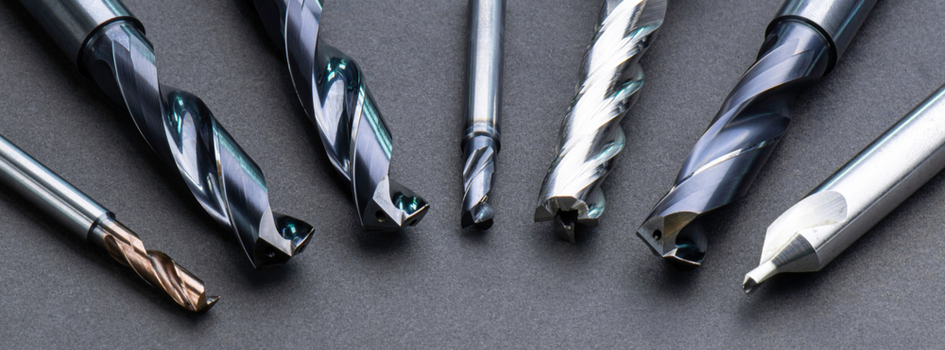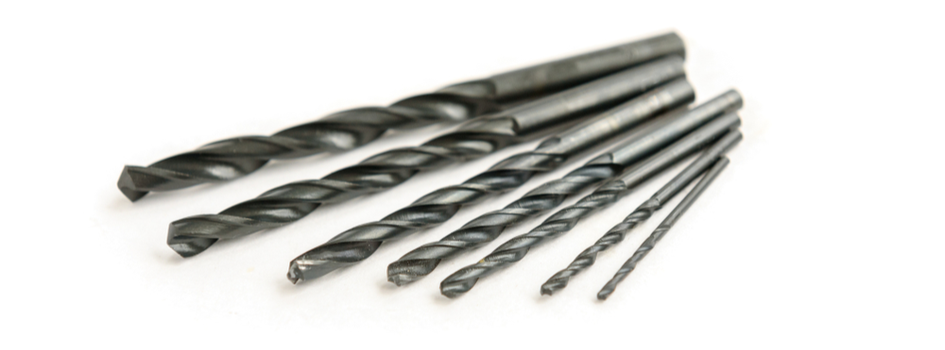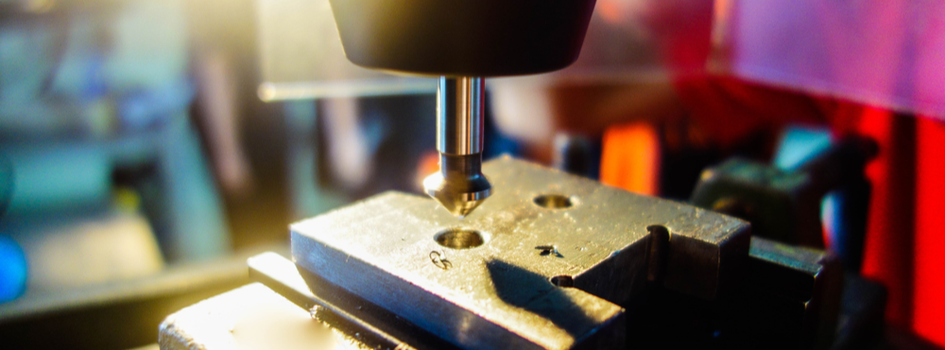
7 Types of Holemaking Tools (and Their Applications)
Holemaking tools range from broaches and countersinks to reamers and drilling tools. Let’s cover seven of the most common types of holemaking tools and how they typically fulfill holemaking applications.
Seven Ways to Cut a Hole
When planning a holemaking operation, certain factors should be considered to determine the best tool choice. For example, take into account the type of material you are working with, as well as the hole diameter and depth. Also, think about the tool itself. Is it user-friendly? Adjustable? How much skill does it require? Let’s explore seven great metal working tools for hole cutting applications.
1. Drilling & Drill Bits
Drilling and drill bits are most commonly associated with hole making tools. They provide a quick, easy, and economical way to produce machined holes. Drill bits work by entering the workpiece axially and then cutting a through-hole or blind hole with a diameter equal to the tool’s. With a wide variety of shapes and materials on the market, you’re sure to find the perfect industrial drill bit for any application. Common types of drill bits include:
- Twist drill bit
- Center drill bit
- Spot drill bit
- Tap drill bit
- Auger drill bit
- Step drill bit
- Masonry drill bit

2. Broaches
A broach part is a long, multi-toothed hole making tool equipped with progressively deeper cuts. The broaching process is valuable because it produces parts with incredible accuracy and surface finish. Broach tools are used in various industries for all types of applications. Here are the most common types of broaches:
- Push and pull broaches
- Keyway broaches
- Shell broaches
- Internal broaches
- External/surface broaches
3. Reamers
Reamers can come in several configurations, including machine, left-hand spiral, right-hand spiral, and straight flute. These metal working tools have an incredibly high degree of accuracy, making them perfect for slightly enlarging existing holes. They work by removing a very minimal amount of material from the workpiece. This technique is typically performed after drilling in order to obtain the smoothest internal finish and most accurate hole diameter. The most widely used type of reamer is the chuck reamer. Other kinds include morse taper reamers, automotive reamers, welding equipment reamers, taper pin reamers, and die maker reamers.
4. Center Drills
Center drills are comprised of a countersink and pilot drill. They are generally used to produce a center hole on a workpiece for smooth turning between centers and support for the load while it turns. These hole making tools are favorable because they are very stiff and less likely to wander. In addition, central drill bit hole angles are typically 60°.
5. Hole Cutters
Also called hole saws, hole cutters are used to cut perfectly round holes in metal, wood, and other materials. These metal working tools can cut far larger diameters than your standard drill bit. Plus, they only need to cut the hole perimeter, making them a very efficient alternative to other tools. Similar to circular saw blades, hole cutters have individual carbide-tipped cutting teeth.
6. Counterbores
Counterboring is ideal for jobs that require a fastener to sit flush with a workpiece surface, and it is usually performed after drilling. These hole making tools typically come in two different cutting diameters—a smaller diameter for the hole and a wider diameter for the recessed head cavity.
In addition, there are several specialty counterbores available on the market, including:
- aircraft counterbores
- back counterbores
- blade counterbores
- cap screw counterbores
- fillister head screw counterbores

When deciding on which style of counterbore you need, consider the following specifications:
- number of cutting edges
- diameter of the counterbore
- diameter of the integral pilot
- diameter of mounting arbor or shank
7. Countersinks & Chamfering
Countersinks and chamfers are the perfect drill bit for creating a conical hole in an object. A countersink bit works by entering a workpiece axially, where it then enlarges an existing hole to have a cone-shaped opening at the top portion. These industrial hole-making tools are effective because they allow screws and bolts to sit flush with a workpiece.
Countersink and chamfering tool bits come in various shapes and sizes depending on your project and preferences. Common countersink angles include 60°, 82°, 90°, 100°, 118°, and 120°.
Finding the Right Holemaking Tool Manufacturer
From drill bits to countersinks, DXP has the holemaking tools for any application. We also offer a variety of metal working tools such as power tools, clamping components, abrasives, milling tools, and more! No doubt you’ll find exactly what you need right here at DXP.
Contact us online today or call 1-800-830-DXPE to learn more about our outstanding products
and services.

